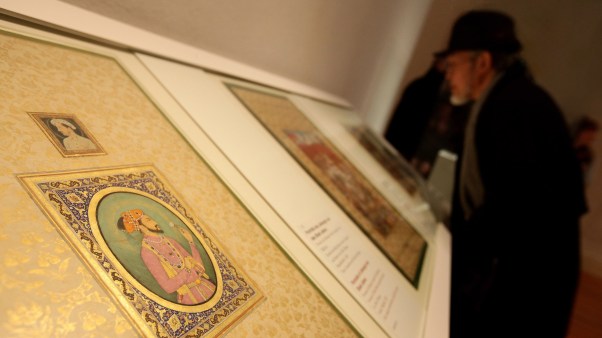CT Movies critic Todd Hertz, who reviewedAvatarfor us, originally wrote this blog post for ThinkChristian.
The image that has most stuck with me since seeing Avatar—and there are a lot of amazing visuals—is one of a human’s weak and broken body cradled in the arms of a giant, strong and healthy alien. It’s a stirring and powerful juxtaposition. Struggling to breathe and crippled from the waist down, this body is the model of human frailty—useless, expiring and fragile—held in the powerful arms of a 9-foot Na’vi like a diminutive child.
This moment highlighted for me how inadequate, brittle and broken the humans are in Avatar. They bleed. They die. Almost every main human faces some physical limitation in the movie’s runtime. But what is fascinating is how they all compensate for their bodily deficiencies and mortality by hiding within other bodies: giant metal attack ships, robot suits and even genetically-altered Na’vi bodies. These examples are just the physical ways in which Avatar’s humans compensate for their frailty. They also compensate with insatiable needs to possess more, know more, gain more and mean more. Ironically, it seems to be this reaction to weakness that spurs their violent aggression. For instance, Colonel Quaritch refuses to cosmetically fix his visible and brutal scars. Those scars prove to this tough solider that he is mortal. And like any classic Napoleon complex, that reminder fuels him to overcompensate with rage and hostility.
Despite all the political messages that might be seen in Avatar, this universal—and possibly unintended—truth lingers behind the action: Humans are frail. Humans will die. And they try to do anything to erase those truths. That is exactly why the film shows such a contrasting view of humans: They are weak and dying but yet are the oppressive, dominant, and seemingly unstoppable empirical force bearing down on creation. I can’t help but think of Job 14: 1: “Man born of woman is of few days and full of trouble” (NIV).
The image of the broken man in the arms of a strong Na’vi got me thinking about the frailty of man (and verses like Psalm 39:5 and James 4:14) and so, in Avatar‘s ending, I saw the hope of our new heavenly bodies. No, I’m sure it was not intended. And yes, there are Pantheistic and New Age overtones clouding the issue, but still, as that weak and crippled character finds a new home, I couldn’t help but think about the day when we turn in our fragile bodies. For, as 1 Corinthians 15: 42-43 reads, “The body that is sown is perishable, it is raised imperishable; it is sown in dishonor, it is raised in glory; it is sown in weakness, it is raised in power; it is sown a natural body, it is raised a spiritual body.” And it won’t just be computer generated.








